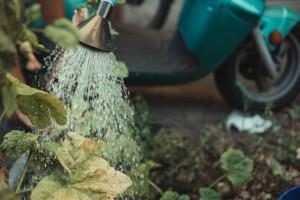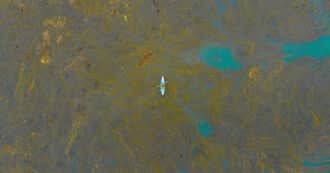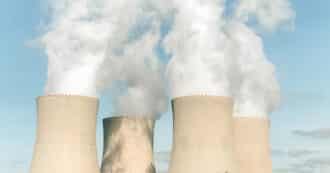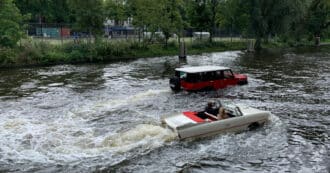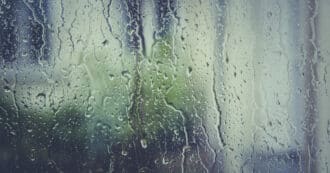By Harry Cooper – Due to poor water quality, as a result of pollution and overuse of freshwater supplies, the drinkable stored water in the world is declining rapidly. Because of this, people are constantly looking for ways to conserve water, and one way to do this is to collect rainwater in a rain water barrel.
Rainwater Harvesting
Rainwater is an important resource that often goes unused, and rainwater harvesting provides households and businesses with an extra supply of water that can be used for watering plants or landscaping. By installing a rain barrel system correctly, we can start harvesting rainwater and making use of excess water that would normally be storm-water runoff.
Where Has All Our Water Gone?
How Much Water Do We Have?
Even though 70% of the Earth is covered in water, very little of that water is actually available for us to drink. Of that 70%, only 3% is drinkable freshwater, and only 1% is not frozen in glaciers. Since there is already so little drinkable water on the planet, it is important we do everything we can to protect and conserve it. However, globally we are doing just the opposite as pollution and water wasting is depleting our already strained resource.
Water Pollution
Since water is such a versatile substance it is used almost every where from homes to businesses to factories. When water gets used in this way it often picks up a lot of different chemicals and substances that can be incredibly harmful both to the environment and to humans.
These substances can range anywhere from human waste to radioactive substances. When water is not treated properly, these substances can get into many different sources of freshwater.
This pollution can harm animals and cause damage to ecosystems. Not only that, but they can also contaminate drinking water sources such as rivers, lakes, and groundwater making them virtually unusable. Thus water pollution shrinks our already scarce freshwater supply.
Wasting Water
Water is an incredibly scarce resource. However in the developed world where clean drinkable water is available by turning on the tap, it can be hard to be frugal about the water we use.
Overusing water in the developed world can put serious strain on local water sources. Sources of water can become completely used up and completely reshape the surrounding environment, as well as potentially leave us with less water to live with in the future. Overuse of water can occur in homes and businesses in many forms. These include long showers, leaving the faucet on, and even landscaping and gardening.
Water For Landscaping and Gardening
Lawns and gardening require large amounts of water to maintain. Not only does landscaping have the environmental impact of using lots of water, but they also use lots of harmful pesticides and lawn equipment such as mowers and leaf blowers that usually run on fossil fuels and emit harmful greenhouse gasses. Many people argue that landscaping is a waste of water because it has so many consequences and has very little benefits other than aesthetic. However, when done properly, landscaping can have some environmental benefits.
When gardening and landscaping don’t use harmful techniques such as pesticides or fossil fuel powered equipment, they can become incredibly environmentally beneficial. Gardens and lawns can take in carbon from the atmosphere and turn it into oxygen, prevent soil erosion, replenish the soil with nutrients and provide food and shelter for certain bugs and small animals.
One of the most important things in making sure your garden is helping the planet rather than being an environmental nuisance is making sure you’re using water efficiently. This can be done by making watering schedules, planting only native plants, or many other techniques but, one of the most beneficial tools to the eco-friendly landscaper is a rain barrel that can harvest rainwater, which can then be put to good use.
Rain Water Barrels
How Does a Rain Barrel Work?
Rain water barrels are large barrels with open tops, designed to collect rain water from gutters. Rain barrels sit on stands normally made from concrete blocks so that the brass spigot used to release the rainwater can be accessed easier.
When it rains, the rain barrel fills up. Some rain barrels have more sophisticated gutter attachments that sense when the rain barrel is full and stop filling it, but most rain barrels have overflow valves at the top of the rain barrel that let out overflow water when it’s full. When there is enough rainwater in the rain barrel, a standard garden hose can be attached the spigot at the bottom, or you can get the water straight from the spigot and put it into a watering can or other container.
Using A Rain Water Barrel
Since so much water goes to waste in homes and businesses in the developed world, many people look to find new sources of usable water to fulfill their water needs, and it’s no surprise that rain barrels have become so popular. It’s estimated that the average roof can collect 600 gallons of water for every inch of rain. This rainwater normally falls of the roof and runs down a storm drain. However, using household rainwater harvesting techniques such as a rain barrel, we can start using the rain as a viable supplement to our dwindling freshwater supply.
The Benefits of Using a Rain Barrel
Rain barrels reduce the amount of freshwater we use from permanent sources such as lakes or groundwater, but using less water in this way can also have several other benefits. By collecting water in rain barrels, you could end up saving hundreds of gallons of water that would normally come from the tap depending on the season and how rainy it is. Saving that much water can help lower your water bill and save you lots of money.
Rain barrels can also help reduce storm-water run off. While water flowing down storm drains and returning to a body of water may seem like a natural process, storm-water often picks up pesticides, heavy metals, fertilizers, and other harmful chemicals when it flows across the ground making storm-water runoff a prominent source of water pollution. When we collect rainwater in rain barrels, every gallon of water that goes into a rain barrel is one that doesn’t mix with toxic substances on the ground and flow into water sources.
Another benefit of rain barrels is that they can often be better for watering plants. Tap water often contains inorganic matter and fluoride which can be harmful to some plants, whereas rainwater doesn’t contain these additives and is much healthier for gardens.
The Downside of Rain Barrels
While rain barrels are a great way to save water and help the planet, it does have one major downside: rainwater isn’t clean enough for drinking. While there are other things to do with water other than drink it, we do mainly use water to drink or to bathe in, and the water in rain barrels just isn’t a good enough quality for that.
While it is possible to install a filter into rain barrels to make the water drinkable, they are often costly and hard to install. So while installing a rain barrel can be a great way to supplement water, and in the rainy season they do indeed fill up fast, it’s important to know what you can do with the water in you’re rain barrel.
Using The Water In Your Rain Water Barrel
While rain water isn’t clean enough to be drunk, it still has a lot of good household uses. Water collected in rain barrels can be used to water gardens, potted plants, lawns, or other plants. However, it is important to note that water collected in rain barrels should only be used on vegetable gardens if the water only goes in the soil and not on the plants.
This water can also be used for washing cars and other vehicles. Additionally, the water can be used to wash patios, windows, garden furniture and the sides of your house.
Religion and Rain Water Barrels
Religious people who want to help communities are recognizing the importance of rain barrels for preventing flooding and collecting fresh water. For example, the organization Faith in Place gives away rain barrels to Chicago communities prone to flooding because of their lack of green spaces to naturally absorb water. According to an article on WTTW, “by collecting rainwater from a building’s downspout, the barrels divert water that would normally flow into streets, sidewalks and the city’s combined sewer system, where overflows during heavy storms cause mixtures of storm-water and untreated sewage to be dumped into the Chicago River”.
Rain doesn’t have to fall at the level of Noah’s flood to cause destruction. Heavy rain fall in an urban area with poor infrastructure can be disastrous. Faith Plan’s distribution of rain barrels in these communities shows how faith communities can support the most vulnerable communities with sustainable solutions.
* Featured image source


